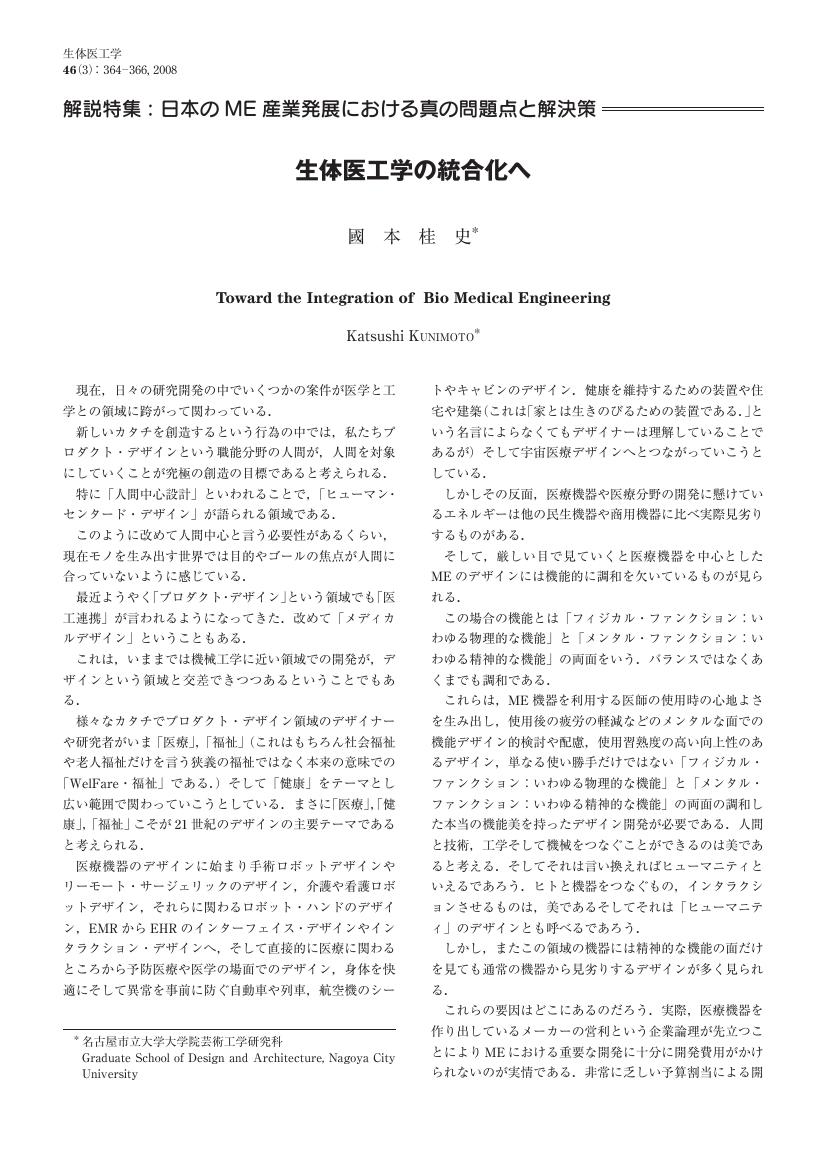1 0 0 0 OA 唾液アミラーゼ活性は中学生の心身ストレスの指標になり得るか
- 著者
- 村上 満 田原 祐助 竹田 一則 山口 昌樹
- 出版者
- 公益社団法人 日本生体医工学会
- 雑誌
- 生体医工学 (ISSN:1347443X)
- 巻号頁・発行日
- vol.47, no.2, pp.166-171, 2009-04-10 (Released:2009-09-09)
- 参考文献数
- 23
- 被引用文献数
- 3
Saliva sampling has some advantages that it is non-invasive, making multiple sampling easy and stress free. The purpose of this study is to evaluate the usefulness of salivary alpha (α) -amylase (sAA) as psychosomatic stress indexes in junior high school students. Seventy healthy (not non-attendance at school) subjects in first-year junior high school students were enrolled (12-13 yr). The sAA in the morning, daytime and early-evening were analyzed for 3 days. General Health Questionnaire (GHQ) -28 and State-Trait Anxiety Inventory (STAI) were conducted as mental health indexes, the all subjects divided two groups; high and low. High stress groups either GHQ-28 (social dysfunction) or STAI (state anxiety) showed significantly high sAA compared with those of low stress groups. The multiple regression analysis using sAA as dependent variable had applied between sAA and both mental health indexes. Although, there was no significance in low stress groups, a causal relationship was found in high stress groups. These results suggested that sAA is useful index for screening of healthy human not having especially psychosomatic stress but havingthe risk before being bad mental conditions such as a state of depression. The sAA might be a useful screening method for preventing to be a non-attendance at school.
1 0 0 0 OA 生体医工学の統合化へ
- 著者
- 國本 桂史
- 出版者
- 公益社団法人 日本生体医工学会
- 雑誌
- 生体医工学 (ISSN:1347443X)
- 巻号頁・発行日
- vol.46, no.3, pp.364-366, 2008-06-10 (Released:2008-10-31)
- 著者
- 藤原 義久 冷水 一也 源野 広和 松浦 英文 安田 昌司 飯田 健夫 牧川 方昭
- 出版者
- 公益社団法人 日本生体医工学会
- 雑誌
- 生体医工学 (ISSN:1347443X)
- 巻号頁・発行日
- vol.43, no.1, pp.162-171, 2005 (Released:2007-01-19)
- 参考文献数
- 20
This paper describes the development of a sensor incorporating an algorithm that estimates the quality of comfortableness by measuring peripheral skin temperature, pulse, and galvanic skin response (GSR) that reflect autonomic nervous system activity. A correct answer rate of 83% was obtained between the subjective comfortableness and the estimated comfortableness by the developed sensor. For the application of this human feeling sensor, we used it to estimate the comfortableness of subjects receiving massages, then developed two alternative adaptive massage control procedures based on the sensor's estimate, and verified the effectiveness of the results through testing the subjects. We observed that in course A (dynamic comfortableness) the peripheral skin temperature dropped and the GSR and pulse rate increased, while in course B (static comfortableness) the peripheral skin temperature rose and the GSR and pulse rate dropped. By the end of the control sequence, there was a statistically significant difference in the amounts of change in both the peripheral skin temperature and the GSR between the two sequences (p < 0.05). To examine the effects of each course more closely, we mapped the trajectories of physiological change during the control sequences of each course at twentysecond intervals, and the results correlated closely with the subjective assessments. These results suggest that bio-control adapted to comfortableness is feasible.
